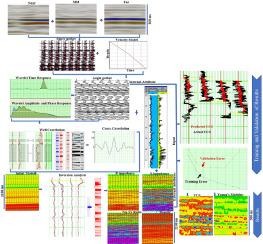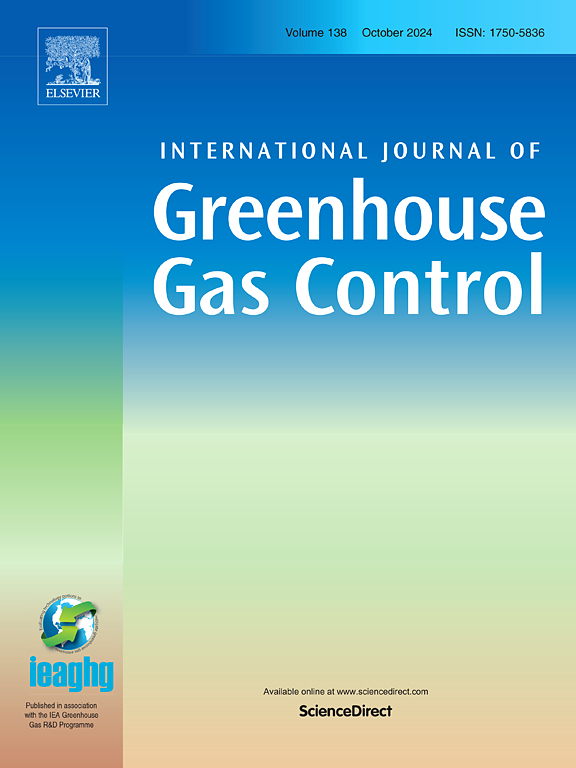Integrated multi-attribute transform and seismic driven machine learning technique for geomechanical assessment of Cenozoic reservoirs and seal integrity for carbon storage in the Central Gulf of Mexico
IF 5.2
3区 工程技术
Q2 ENERGY & FUELS
International Journal of Greenhouse Gas Control
Pub Date : 2025-09-25
DOI:10.1016/j.ijggc.2025.104480
引用次数: 0
Abstract
Assessing the geomechanical integrity of seals and storage reservoirs is important prior to carbon dioxide (CO2) storage because it can determine the safety of storage, containment and stability of a proposed storage, and helps minimize the possibility of CO2 leakage. This study has integrated simultaneous seismic inversion, multi-attribute transform, and a probabilistic neural network, and uses geophysical well logs to evaluate geomechanical parameters for reservoir and seal integrity assessment of Cenozoic strata. Results indicate that candidate reservoir and seal units identified from wells in the study area possesses greater failure strength than the in-situ stresses and are geomechanically stable. However, there is possibility of tensile failure occurring when the injection get to the mature stage and the effective minimum stress crosses the zero effective normal stress line. Each candidate reservoir storage unit has higher rock strength than its overlying shale layer. The thickness of the caprock units is adequately high to provide effective seal and the thickness of the reservoirs are sufficient to support optimal CO2 storage resources in the study area. The friction angle of Pliocene–Pleistocene strata is adequately high especially in the eastern part of the study area to minimize the risk of fault reactivation and associated deformation. Additional work can be performed to simulate the response of seals, reservoirs, and geomechanical deformation at variable rates and durations of injection.

综合多属性变换和地震驱动机器学习技术在墨西哥湾中部新生代储层地质力学评价和封存完整性中的应用
在二氧化碳封存之前,评估密封和储层的地质力学完整性非常重要,因为它可以确定封存的安全性、密封和稳定性,并有助于减少二氧化碳泄漏的可能性。本研究将同步地震反演、多属性变换和概率神经网络相结合,利用地球物理测井资料对地质力学参数进行评价,用于新生代地层储层和密封完整性评价。结果表明,研究区的候选储层和密封单元的破坏强度大于地应力,具有良好的地质力学稳定性。然而,当注射到成熟阶段,有效最小应力超过零有效法向应力线时,有可能发生拉伸破坏。每个候选储层存储单元具有比其上覆页岩层更高的岩石强度。盖层单元的厚度足以提供有效的密封,储层的厚度足以支持研究区最佳的CO2储存资源。特别是研究区东部,上新世—更新世地层的摩擦角足够大,以尽量减少断层再活化和相关变形的风险。还可以进行额外的工作来模拟不同速率和注入时间下密封圈、储层和地质力学变形的响应。
本文章由计算机程序翻译,如有差异,请以英文原文为准。
求助全文
约1分钟内获得全文
求助全文
来源期刊
CiteScore
9.20
自引率
10.30%
发文量
199
审稿时长
4.8 months
期刊介绍:
The International Journal of Greenhouse Gas Control is a peer reviewed journal focusing on scientific and engineering developments in greenhouse gas control through capture and storage at large stationary emitters in the power sector and in other major resource, manufacturing and production industries. The Journal covers all greenhouse gas emissions within the power and industrial sectors, and comprises both technical and non-technical related literature in one volume. Original research, review and comments papers are included.

 求助内容:
求助内容: 应助结果提醒方式:
应助结果提醒方式:


